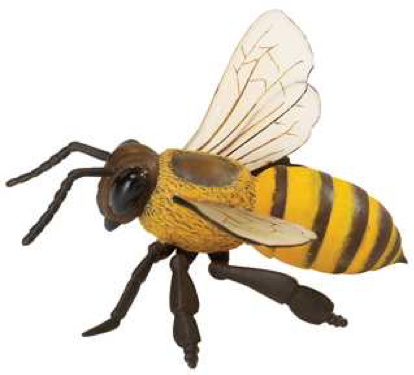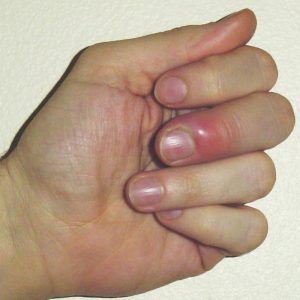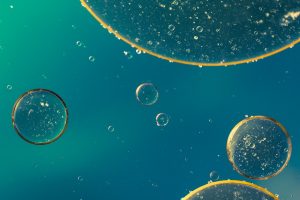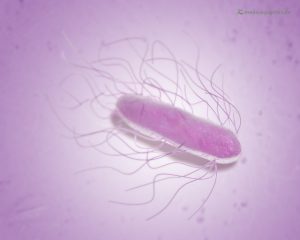About Miriam Sharpe
Science Communicator at the Department of Biochemistry, University of Otago.New species, new information – how our native species can benefit from genomics

The face of nature’s stream cleaner – a kōura shows off some of the six pairs of appendages that make up their mouths, as well as their huge front claws. Image source: RNZ National
Mary Hawkes explains her work helping to make genetic resources for New Zealand’s kōura (freshwater crayfish).
New Zealand is a country with weird, wonderful, and unfortunately endangered native species that have spent millions of years evolving in a unique ecosystem. From the kākāpō to the tuatara, conservationists are now using genomic data to help preserve our natural heritage. Continue reading
Gouty arthritis – what you eat, who you are, or somewhere in between?
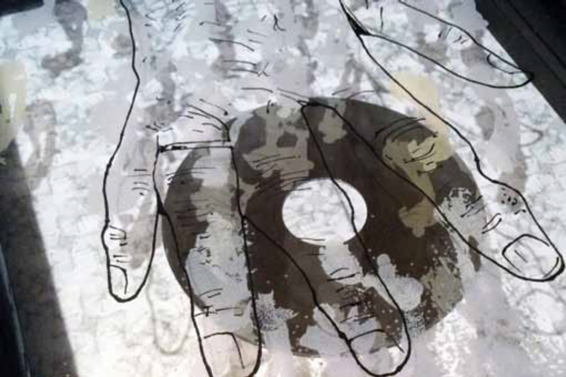
Ties That Bind, an artwork depicting gout by Marion Wassenaar, detail, 2017, mixed media. Published in Junctures: The Journal for Thematic Dialogue. No 18 (2017). CC BY-NC 3.0 NZ.
What do most people think of when they hear the word gout? I used to think of a pain that old, fat, white men from the olden days suffered from. But I was wrong. Yes, gout is painful. If you have a gout attack or flare-up you will suffer pain “that feels like a thousand needles stabbing you all at once”. But it can affect anyone, of any age and any ancestry, and it’s still a problem now.
AI vs evolution
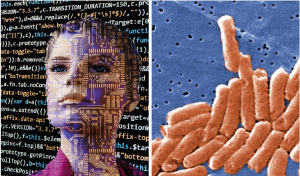 Artificial intelligence gets a lot of scare stories in the media at the moment. But AI is a powerful tool that can be used for good as well, especially in fields that now generate tons of data, like medicine.
Artificial intelligence gets a lot of scare stories in the media at the moment. But AI is a powerful tool that can be used for good as well, especially in fields that now generate tons of data, like medicine.
One of the big challenges in modern medicine is keeping ahead of the microbes that cause infectious diseases. Can AI, in particular a small part of AI called machine learning, help us detect and stop deadly infectious diseases before they spread and become harmful epidemics? Continue reading
Plastic Honeybees
Bees are plastic!
Well, they’re not actually made out of plastic (at least not usually), I mean the other meaning of plastic: easily shaped or moulded.
One set of genes can develop into one of a variety of slightly different bodies, depending on what environment those genes are exposed to. This plasticity is part of how an organism adapts to changes in their environment.
In other words, bees can change their bodies when something in their environment changes. And this happens without the bees changing their genes. Continue reading
Turning inflammation on, one step at a time
One of the amazing things your body does is to protect itself against disease. When bacteria or viruses invade your body, or you cut yourself, your white blood cells and the substances they produce will protect you, and start healing the damage. The affected area swells up and hurts. This process is called inflammation.
However, when something goes wrong and a body can’t turn off the inflammation response, or it turns on at the wrong time, inflammation can cause arthritis and other autoimmune diseases, and can even lead to cancer. Continue reading
Stress relief – cell style
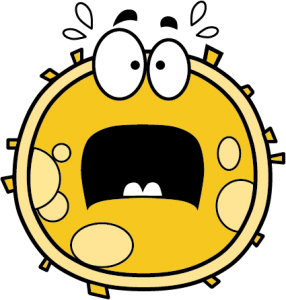 Everywhere you look there’s something to stress you: Trump-induced stressing over the end of the world, working insane hours to gain a toe-hold on the housing ladder or to keep food on the table, kids screaming, keeping up with social media, etc…
Everywhere you look there’s something to stress you: Trump-induced stressing over the end of the world, working insane hours to gain a toe-hold on the housing ladder or to keep food on the table, kids screaming, keeping up with social media, etc…
It’s not just your body as a whole that has to deal with stress. Your cells do too. But what your cells consider to be stressful is probably not at the top of your list of things you worry about. Continue reading
The little rascal – high heart disease risk
We all know that eating too much bad food and not exercising puts us at risk of cardiovascular disease. But did you know there is another risk factor that increases the risk of heart disease in more than 1 in 5 people, that is determined by a person’s genetics, doesn’t respond to diet or exercise, and currently has no treatment?
This risk factor is a high level of lipoprotein(a) in the blood.
Lipoproteins are packages for carrying lipids (a fancy word for fats and oils) in the blood. Lipids do not mix well with water or blood, therefore they have to be packaged up with special proteins so they can be moved in the blood stream around the body. Continue reading
Watching evolution at work
Wayne Patrick, a senior lecturer in the Otago Department of Biochemistry*, is a devoted fan of evolution and proteins. He and his former PhD student, Matilda Newton, along with colleagues in Sweden, have been looking at changes that happen as an organism evolves, not just in the genes, but also in the machinery of cells, the proteins.
Thanks to Darwin and others we know a great deal about evolution, but there is still a lot to learn, particularly the nitty-gritty at the molecular level. We need to understand how evolution works, not just to understand how people and other creatures came into existence, but for many reasons, especially to improve our understanding and treatment of diseases. Continue reading

